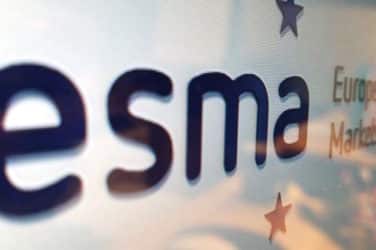
The recent Knight Capital algorithmic trading glitch appears to have put regulators in a spin as to how to control the growing influence of high-frequency trading in markets.
U.S. market maker Knight Capital was left close to bankruptcy last month following an algorithmic error that caused erratic trading activity and left the firm with billions of dollars of unwanted securities. The company estimated that it lost $440 million because of the software glitch.
The Securities and Exchange Commission, the main regulator of U.S. equity markets, is to host an industry round table on September 14 exploring ways to safeguard markets against automated systems. It is thought that HFT now accounts for over 60% of U.S. daily volumes, while that figure is around 40% in Europe and less again in Asia.
One regulator that appears to be slightly ahead of the curve is the European Securities and Markets Authority (Esma), which has written detailed reforms to better monitor algorithmic trading practices such as high-frequency trading. These rules are now beginning to be applied across the whole of the European Union. While Hong Kong’s Securities and Futures Commission, in a July consultation paper, proposed guidelines for algorithmic trading and direct market access, including the annual inspection of algorithms and systems put in place to prevent erroneous trades spewing into the marketplace.
“It seems like the U.S. regulators are all going to sit back and follow what Esma is doing over HFT,” Terry Keene, president and chief executive of iSys, a technology vendor, told Markets Media.
“The SEC has set up a round table after the Knight fiasco but is a bit of a delay tactic to see how Esma pans out. Esma are being a bit militant about it but they are thinking that their constituency is expecting that. But I can see why Esma have adopted this stance as it is a lot easier to clamp down hard and back off instead of implementing a bit at a time.”
The Knight trading snafus follows on from other high-profile incidents this year such as the series of glitches that hit Bats Global Markets’ market debut in March on its own exchange when the shares of the transatlantic exchange operator plunged on opening. The company was forced to take the unusual step of withdrawing its initial public offering of shares. Shares in Apple also crashed on Bats’ exchange earlier that day but this fall was halted after a circuit breaker kicked in and stopped trading in the share.
“Unlike the Knight incident, people don’t often talk about the Bats IPO,” said Keene. “Fifteen minutes before Apple crashed the circuit breaker kicked in—and fortunately stopped that—but it didn’t stop Bats, which is kind of intriguing if you think about it.”
Two months after Bats’ troubles, trading problems also marred Facebook’s IPO on the Nasdaq stock exchange in New York.
While the first big incident of this kind to unnerve investors was the ‘flash crash’ of May 2010 when the Dow Jones Industrial Average index plunged 1,000 points, almost 9%, only to recover within minutes. HFT was implicated for this as $1 trillion worth of securities temporarily evaporated from U.S. markets.
“Regulators are currently trying to enforce market participants to toe the line,” Matthew Coupe, sales director of Redkite Financial Markets, a provider of real-time market surveillance systems, told Markets Media. “It is these incidents that are giving HFT a bad name. The classic example was Knight but if we had appropriate measures in place that wouldn’t have happened.”
In all cases, apart from the Facebook IPO, algorithms have been allowed to run free, eroding investor confidence.
Monitoring trades in real time may be one way to curb the predatory excesses of high-frequency trading. But Keene at iSys warned: “Even if you were able to identify everything and immediately rectify things, how would you stop the Bats incident when Bats dropped from 13.50 cents to 4 cents in around just 12 seconds. And collecting data and analyzing data in real time is a very expensive proposition.”
Keene believes that thorough testing of algos before they are let loose on the markets is possibly the best way to go for the industry to better police itself, as he believes a post-MiFID II regulatory landscape, with its proposed draconian measures for HFT, as well as the proposed financial transaction tax in Europe, could in effect cause huge unintended consequences for all market participants.
“We need to live with HFT,” said Keene. “Regulators can’t solve everything. We need to find a solution that doesn’t entail really harsh regulation down the line. Everything gets blamed on HFT but a third of HFTs are market makers so we can say all the bad things we like about them but they are creating liquidity, making markets and allowing everyone to trade and if the market makers are moving in that direction then that is obviously the trend.”
Esma, meanwhile, has listed four types of market abuse in its automated trading guidelines, which will probably become fully enforced across the EU from next month, to limit the more predatory practices of HFT. The first category is that of ping orders, where you enter small orders in order to ascertain the level of hidden orders and is particularly used to assess what is resting on a dark platform. The second category of market manipulation is quote stuffing, whereby large numbers of orders and/or cancellations/updates to orders are entered so as to create uncertainty for other participants, slowing down their process and to camouflage their own strategy.
Thirdly, there is momentum ignition, which is the entry of orders or a series of orders intended to start or exacerbate a trend, and to encourage other participants to accelerate or extend the trend in order to create an opportunity to unwind/open a position at a favorable price. And finally, there is layering and spoofing, where a trader submits multiple orders often away from the touch on one side of the order book with the intention of executing a trade on the other side of the order book. Once that trade has taken place, the manipulative orders will be removed.
“Esma’s rules are a good step in the right direction,” said Coupe at Redkite. “But the one rule that doesn’t make sense is ping order types.”
Coupe added: “But HFT is just a different investment time horizon compared to medium and long term investors. But it shouldn’t be coming down to restricting someone’s investment time horizon. How can you define what is an effective time horizon that is appropriate? I don’t think anyone should be allowed to make that decision as that makes a non-free market.
“HFT is not a bad thing but the problems come when, in terms of predatory practices, you are creating artificial volatility to the market to gain profit and that is the bad practice that should be stamped out.”



